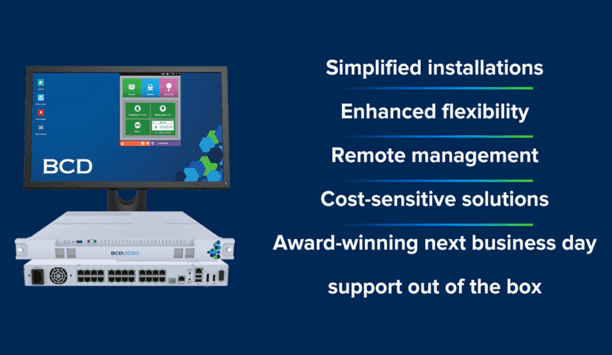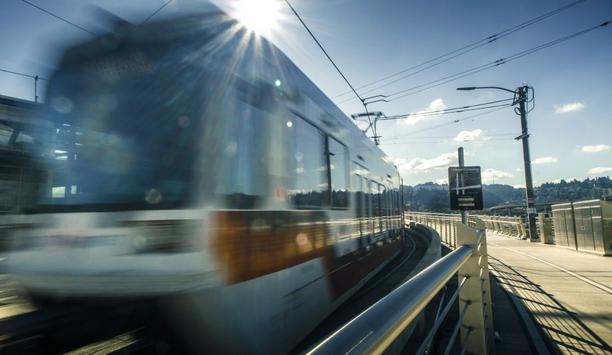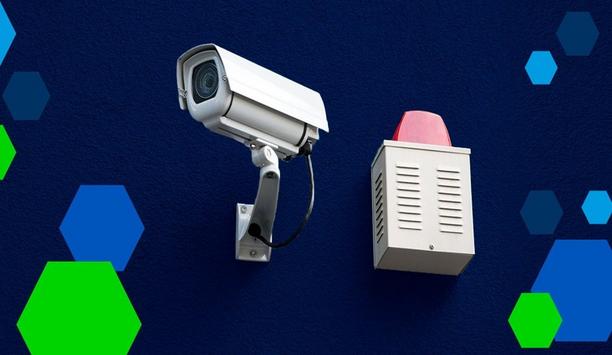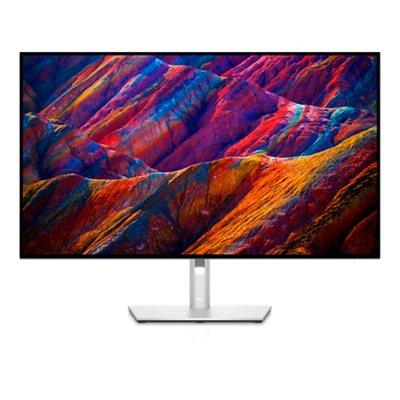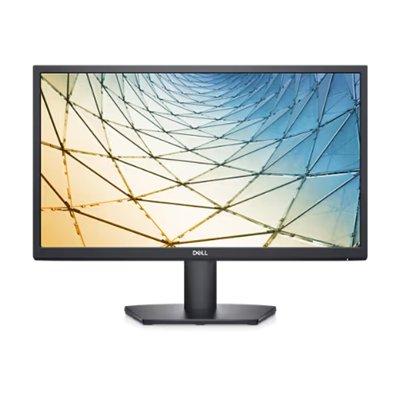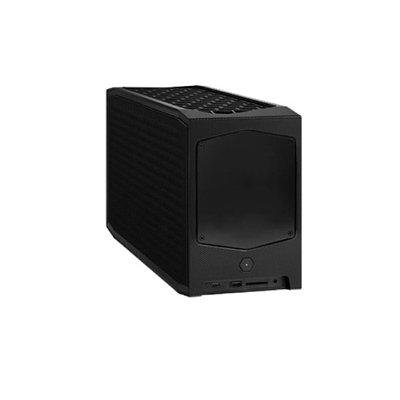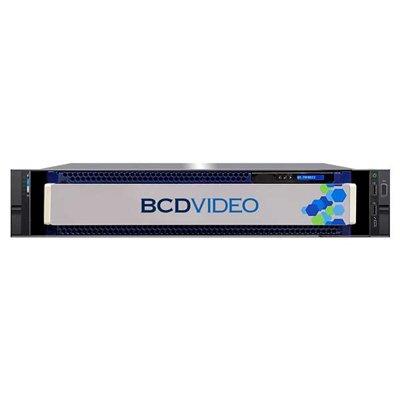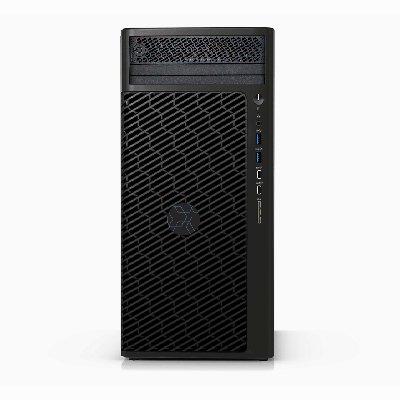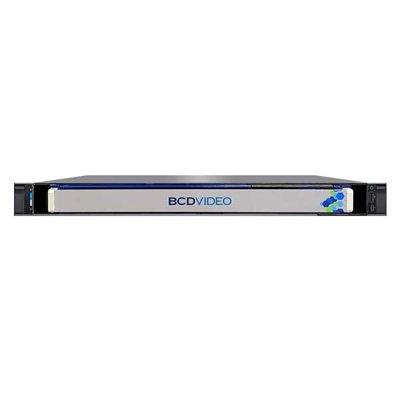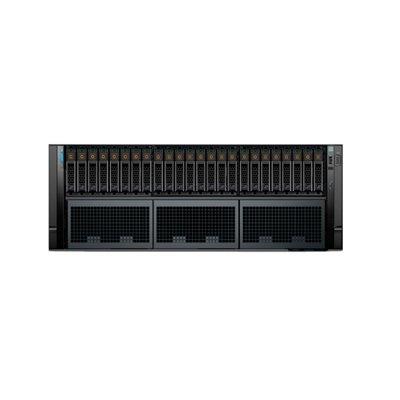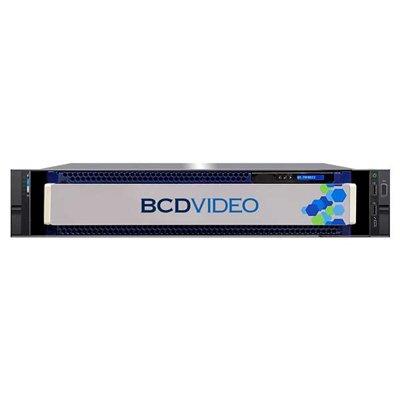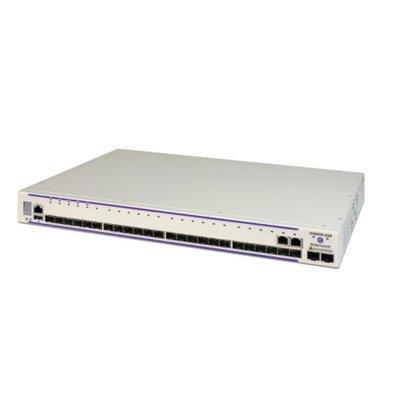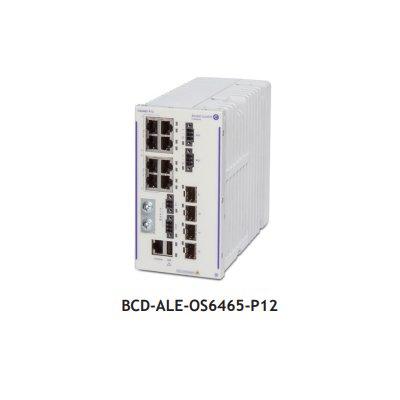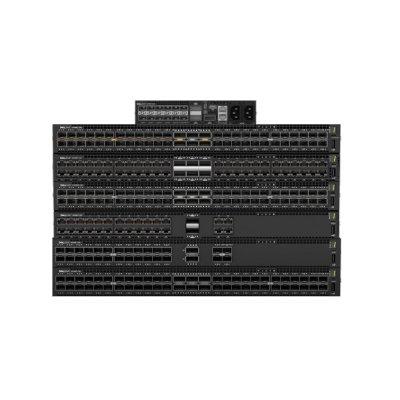BCDVideo

BCDVideo Overview:
With a focus on proactive response and personal service, BCD is the most trusted source for innovative, purpose-built IP video storage solutions designed for security integrators. BCD partners with the world’s top security integrators, distributors, and technology partners to implement security solutions certified by the top VMS and digital camera manufacturers. Our global footprint includes more than 190,000 systems recording nearly four million cameras in 91 countries. From project design and calculations to 24/7/365 customer support, BCD is there every step of the way to ensure project success.
- Products
- Video recording servers
- Client viewing workstations
- Storage
- Networking
- Hybrid Cloud
- Remote system monitoring
- Disaster recovery
- Virtualization
- Professional services
- Industries
- Education
- Government and municipalities
- Retail
- Hospitality
- Oil and refineries
- Manufacturing
- Transportation
- Stadiums/large event venues
- Gaming/casinos
- Healthcare
BCDVideo news
When the Utah Transit Authority (UTA) decided to expand their rail lines in 2013, they knew that their surveillance systems would need a major upgrade to keep both passengers and property safe and secure. An open platform video management software (VMS) solution and flexible storage proved to be the clear choice to efficiently support a growing public transit system as new business opportunities came to the region. Challenge: safe public transit sets the stage Local leaders know that a top-notch public transit system makes a region more desirable to relocating businesses. And while accessibility is foremost, security is of immense importance, with passengers placing a premium on safe transportation. The right choice was a VMS that was much more flexible and efficient In 2014, the UTA was building a new transit line and was eager to display an improved surveillance system to state dignitaries. Their video security system needed upgrading from one that was limited by the capacities of its servers, to accommodate a 500-camera expansion. The right choice was a VMS that was much more flexible and efficient. Solution: centralized expansion is on track: Milestone XProtect® VMS platform Network cameras from Axis, Panasonic, IQeye, and DW® HP servers from BCDVideo Implementation by Diamond Partner Stone Security Flexible software design to further expand the system Milestone VMS supports many different kinds of cameras and allows more devices on platforms while centralizing the control system. The security camera views are accessible by dispatch, commuter, rail control centers, and other authorized users. The 1000+ camera system as of 2015 operated with nine HP servers (eight for recording and one for management). With this system in place, UTA could expand to 2,000 cameras or more. Result: staying ahead and following up Milestone marries two critical components: a centralized system and a lot of diversity in its deployment Milestone marries two critical components: a centralized system and a lot of diversity in its deployment. The open platform provides a best-of-breed software integration model and ensures that UTA isn’t tied to any one technology, accommodating future growth. The significant improvement in video quality made it easier to monitor and investigate any adverse events. The system function called Evidence Lock allows extension of the retention time for video recordings from selected cameras. And the encrypted video footage has authenticated time stamps, which is useful when exporting video to be presented in court. The use of Milestone technology had a positive financial impact for UTA. Gate arms at rail crossings frequently get damaged or broken off by motor vehicles. Prior to the Milestone installation, these costly incidents would often go unresolved. The new camera deployments helped police to follow up on incidents and even recoup damages. Preventing serious incidents The Milestone VMS lets staff check the alarm by accessing the video remotely, saving time and money UTA equipped its system with monitoring alarms in 19 locations, mostly in remote buildings that require navigating through difficult terrain. The Milestone VMS lets staff check the alarm by accessing the video remotely, saving time and money. The system has also been used to prevent serious incidents. When a driver failed to report his truck stalled on a train track, the incident was observed in the VMS by a UTA technician who notified rail authorities. In that instance, Milestone helped avert a serious and potentially life-threatening accident. “Milestone has saved us tens of thousands of dollars by allowing us to better monitor and investigate transit incidents and accidents.” - Video Security Administrator, UTA.
Financial institutions of all sizes demand simple, reliable solutions to protect against fraud, theft, and accidents in the workplace. Advancements in camera resolution and storage capabilities have put pressure on banks and credit unions to upgrade their video surveillance systems. Upgrading to a modern, economical NVR server will greatly increase system performance and scalability for small-budget projects with benefits seen across both loss prevention and business insights. Reliable High Performance However, not all banks have the same security budget as large institutions. This makes high-power, custom-built solutions seem unrealistic; however, small projects featuring bandwidth limitations need to retain the ability to scale up depending on future surveillance demands. Before any system expansion can occur, reliable high-performance must be established. White-box solutions compromise quality and underperform when exposed to the tough requirements of the financial security market. Fortunately, custom-built, video-optimized solutions are not exclusive to large multinational financial institutions. Network Architecture When upgrading an ineffective digital security system, a new network architecture needs to be created. Usually, this means switching from DVR to NVR servers. As a result, network switches attach to the camera allowing for easier future system expansion. Along with the newly gained scalability, throughput performance on servers can achieve significantly higher levels.BCDVideo offers servers, networking and workstations that provide enterprise-quality performance for all financial projects, regardless of size Implementing a complete video solution with high-performance servers, modern networking protocols and powerful workstations in financial institutions is now possible, even for small projects. BCDVideo offers servers, networking and workstations that provide enterprise-quality performance for all financial projects, regardless of size. The Benchmark Magazine 2016 Infrastructure award winner Aurora Server Series earns its name by marking the dawn of a new era in DVR replacement. Small-budget projects that have previously succumbed to the pressure of sacrificing quality for short-term savings now have access to servers with redundant power, 12Gbps RAID controller with 2GB of Flash Based Write Cache, hot-pluggable helium hard drive, and 10,000 PassMark rated CPUs. These big project features fit price-conscious budgets while maintaining the high-performance found in enterprise surveillance. BCDVideo Titan Networking The Titan Networking Series is priced well below standard to ensure project size and scope does not prevent an integrator from deploying a complete networking solution. Without the added cost of a networking engineer, savings reach into the thousands. Additionally, by using cutting-edge technology like Shortest Path Bridging, Titan switches, backed by a five-year, on-site warranty, will run at a high-level for years. The Gamma Series workstations fill the void in commercial and enterprise environments. Ideal for access control and IP video surveillance, they are powerful enough to render high-quality megapixel images for applications running 24/7. Optimized for advanced graphics and video capabilities, smaller projects can use the Gamma Series as both a video recorder and viewer.
A few decades ago, people lived with minimum security. Only a few facilities hired physical security, but most buildings relied on locks and vigilance. Currently, some companies are integrating modernized video security with other building systems. For example, the video integrated with access control allows security to visually verify individuals entering secured areas. Video Security Video security has evolved over the last few years from single-application technology to solutions that use the cloud and even artificial intelligence (AI) to meet business challenges. By leveraging integrated building security systems, facility managers can create a unified platform for managing security, access control, and more, ultimately pioneering to a safer and smarter environment for staff. How are security systems integrated? Security system integration is the process of combining different security technologies and building systems into a unified and interconnected network. When users integrate these systems, they’re able to communicate with each other, share data, and operate cohesively to enhance the overall security measures within a building or facility. Here’s how integrated security systems typically work: These systems can share data in real time, allowing for a more comprehensive view of security incidents and events. Facilities have centralized control and monitoring, which simplifies operations and improves response times. Integration enables the automation of certain security processes and generates alerts based on predefined rules. Integrated systems can provide deeper insights through data analytics and enable better decision-making. These systems are often scalable, allowing for potential expansion or modification as the security needs evolve. To install or integrate new security systems, users need to meet a few requirements: Internet Protocol (IP): the security devices need to be able to connect to the Internet. Open-source software: Although not the case for all systems, most brands operating on open-source software can be integrated. Single camera system: Users need IP cameras that are compliant with the Open Network Video Interface Forum (ONVIF) so they can connect and work together from one integrated system. Hardwired system: For the most reliable security, ensure the system is hardwired with low-voltage cabling. Network infrastructure: Have a robust network infrastructure in place to support the IP cameras and ensure they can communicate effectively with the open-source software. Software security: Protect the IP cameras, network, and open-source software from potential cyber threats by updating firmware and software regularly. Key integrated building systems Both closed-circuit television (CCTV) and IP security camera systems can be combined with other security systems to provide a comprehensive security solution, depending on whether upgrades are needed. If users are considering integrated CCTV security upgrades, assess the current security measures and identify potential challenges that the user would like to address. Some examples of key systems to add to the building include: Fire and life safety: Video surveillance systems help detect fire or safety incidents. With integrated systems integrated fire alarm systems can trigger specific responses. For example, in the event of a fire, safety doors can unlock for prompt and safe evacuation procedures. Intrusion detection: When all security measurements are combined, including burglar alarm systems, users are left with a more proactive system. If an alarm is triggered, the necessary authorities can be alerted while surveillance cameras provide real-time visual confirmation of the area. Access control: An access control and video security integration provides comprehensive security, especially where individuals often access secured areas. With an integrated alarm system, cameras can focus on the location if an unauthorized access attempt is made. Additionally, integrating access control with smart locks and intercom systems will allow users to manage and track visitor access with seamless communication from any location. Building automation: Use video feeds to provide floor access permissions through elevators or increase visibility with strategically designed lighting. Users can also activate certain appliances when needed to reduce unauthorized use and lower potential security vulnerabilities. Benefits of integrating video surveillance with building systems Integrating video surveillance with current building systems offers several benefits: Enhanced security: By integrating video surveillance with access control, intrusion detection, and alarm systems, users can create a comprehensive security network that provides real-time monitoring and alerts. These integrations improve the security measures overall. Improved response times: Integrated systems enable quicker response times to security incidents by allowing immediate visual verification of events and reducing false alarms. This also helps security personnel to react promptly to any threats or safety concerns. Operational efficiency: Having a centralized monitoring and control system with video surveillance alongside other building systems streamlines operations. It enhances efficiency and reduces the need for manual oversight. Cost savings: Integration can lead to cost savings in terms of reduced manpower required for monitoring, improved incident management, and potentially lower insurance premiums due to better security measures. Data insights: Integrating video surveillance with building systems allows for data correlation and analysis, providing valuable insights for optimizing building operations and security protocols. Flexibility: Many integrated systems are scalable, allowing for easy expansion of modification as security needs evolve or building requirements change. Technology and integration solutions Security system integrations mainly work via the Internet, which means video data is exchanged between different systems. Instead of managing separate databases, users only need one management platform. This is possible with multiple integration solutions: Cloud-based integration: Cloud video storage integration provides flexible software options to store, safeguard, and access video surveillance footage on the cloud. It reduces infrastructure and maintenance costs and videos can be accessed remotely with an Internet connection. Unified security platform: A centralized platform integrates various building systems, such as video surveillance, access control, and alarms, giving users a comprehensive view of building operations on a single interface. POS and inventory management integration: Integrating video security with point-of-sale (POS) systems helps with inventory management in retail environments. Through video analytics and transaction data, users can improve customer service while enhancing inventory control. Virtualized infrastructure: Virtualising the hardware protects the system from data loss and lowers storage costs while enhancing system performance and optimizing resource allocation. This infrastructure offers a scalable option for building managers who want to make the most of their system resources. AI appliances: Incorporating AI-powered video appliances for video analytics enables automated monitoring, intelligent alerts, and advanced security features. With improved threat detection, proactive security measures, and increased operational efficiency, this intelligent automation solution can enhance security response times. Use BCD’s solutions in the next integration project Technology has changed the potential of security measures for company buildings and facilities. With the possibility of integrating different building systems with video security, users can improve a structure’s operational efficiency and overall security. Whether users manage a small building with four cameras or a large facility with thousands, BCD’s products can enhance any security infrastructure. Its configured hardware and software solutions can be deployed into security integration projects and customized to the needs.
